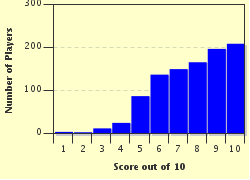Quiz Answer Key and Fun Facts
1. 1577. Domenikos Theotokopoulos, a trained icon painter born on Crete, migrated to Toledo in Spain. An artist with a highly distinctive style, he continued to sign his work with his birth name though he is remembered by a nickname.
2. 1645. A little girl whose family name has been lost to time was growing up in an England divided by civil war. In the 1660s she spied for the Stuart monarchy in the Netherlands and later became a popular Restoration playwright.
3. 1736. In Paris a gifted and beautiful teenager, Jeanne Antoinette Poisson, was studying music, art and literature. As an adult she became a patron of the arts and official chief mistress of King Louis XV of France.
4. 1745. A 16-year-old German princess, Sophia Augusta Fredericka, married the Duke of Holstein-Gottorp. Nearly two decades later, when her husband succeeded to the throne of a vast empire, she forced him to abdicate and reigned alone for 34 years.
5. 1784. Arthur Wellesley, born in Dublin to an Anglo-Irish aristocratic family, was a lonely and unpromising schoolboy at Eton College. As an adult he astonished his family by becoming one of the leading military and political figures of 19th century England.
6. 1895. Margaretha Zelle married Captain Rudolf MacLeod of the Dutch Colonial Army and settled in Indonesia. The marriage failed and by 1903 Margaretha, now using a stage name, was working in Paris as an exotic dancer. In 1917 she was convicted of spying for Germany and executed by firing squad.
7. 1896. In Tiflis in the Russian Empire, a teenager named Iosif Dzhugashvili was studying theology at the Georgian Orthodox Seminary. In his 20s Iosif became a committed revolutionary and, though officially referred to as 'tovarishch' (comrade), eventually exercised dictatorial power over many millions of people.
8. 1899. Mustafa Kemal, a young man from Salonica, enrolled in the Ottoman Military Academy in Constantinople. After serving in WWI he led a successful revolutionary movement and by 1934 was known as the father of his nation.
9. 1906. In New York City, William Joyce was born to Irish American parents. Raised in Ireland as a Catholic but staunch Unionist, Joyce became an ardent Fascist and was executed by the British for treason in 1946.
10. 1922. Anjeze Gonxhe Bojaxhiu, a 12 year old girl of Albanian ethnicity born in the Ottoman Empire, decided to commit herself to a life of service. Many years later she was awarded the Nobel Prize for Peace for her work in alleviating poverty.
Source: Author
Otautau
This quiz was reviewed by FunTrivia editor
bloomsby before going online.
Any errors found in FunTrivia content are routinely corrected through our feedback system.

